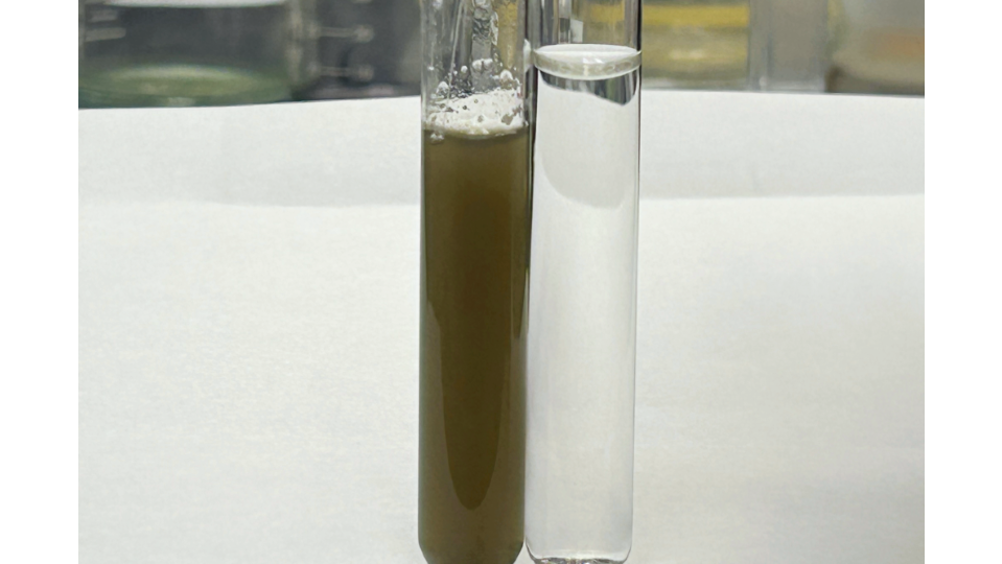Testing of a new Purdue-developed technology has shown that it can effectively destroy a variety of hazardous chemicals ranging from fuel additives to pharmaceuticals at scale. Recent results from two third-party testing laboratories have shown that the technology also destroyed “forever chemicals,” including PFAS, in samples from California test sites.
Rey Barreto, associate professor of chemistry at Purdue University Northwest (PNW), disclosed this innovation to the Purdue Innovates Office of Technology Commercialization (OTC).
“This innovation represents an exciting leap forward in the development of water treatment,” said Dipak Narula, the OTC’s lead technology development liaison and assistant director of business development and licensing – physical sciences. “This disclosure offered a unique opportunity for us to connect academia and industry in a way that allowed the project to become much larger than the sum of its parts. We look forward to continuing to connect bold ideas to the industry partners who can drive them toward the market.”
A number of Purdue faculty supported the project through their wide range of expertise including Charles Steele, physical science lecturer and forensic science coordinator at PNW; Fred Berry, professor at the Purdue Polytechnic Institute’s School of Engineering Technology (SoET); Jim Condron, assistant professor of practice at the Purdue Polytechnic Institute’s SoET; Tillmann Kubis, Purdue University’s Katherine Ngai Pesic & Silvaco Associate Professor of Electrical and Computer Engineering in the Elmore Family School of Electrical and Computer Engineering; and Christina Ferreira, assistant research faculty and lipidomics scientist at the Bindley Bioscience Center.
Rene Ramirez, founder of Fino Advisors, decided to fund early-stage development in partnership with the university. This collaboration has led to Frellmann Water Technologies, a startup spun out from the project now advancing Barreto’s innovation firmly out of the lab and into the real world.
“At Fino Advisors, we’re focused on backing affordable, low-energy technologies with the potential to transform critical systems for both people and the planet,” said Ramirez. “Traditionally, full destruction technologies are exorbitantly expensive and don’t scale well while most affordable technologies are only able to filter contaminants. Frellmann’s technology is designed to handle contaminants of emerging concern for the long term for volumes both municipal and industrial. By combining Purdue’s scientific expertise with our industry insight, we’re accelerating the path to cleaner, safer water at almost any scale.”
The water project has developed without federal funding. Instead, industry funding and interest was matched with Purdue’s talent pipeline.
The project also utilized seven capstones, a final project in which teams of students use their combined knowledge to solve real-world problems for businesses. Since the project’s inception, over 60 students from two Purdue campuses have worked to bring the innovation to market readiness through the university’s Fusion Point program (industry-funded capstone projects).
“This technology embodies our vision for leveraging the collective strengths of Purdue and our industry partners,” Berry said. “By providing undergraduates with hands-on learning experiences and fostering collaboration among professors and entrepreneurs, we create a dynamic team capable of executing transformative projects. This initiative will fundamentally alter our approach to water treatment, showcasing the powerful outcomes that arise when diverse talents unite.”
Currently scheduled to be fully deployed in multiple central California locations, the team hopes to soon expand the technology nationwide.








